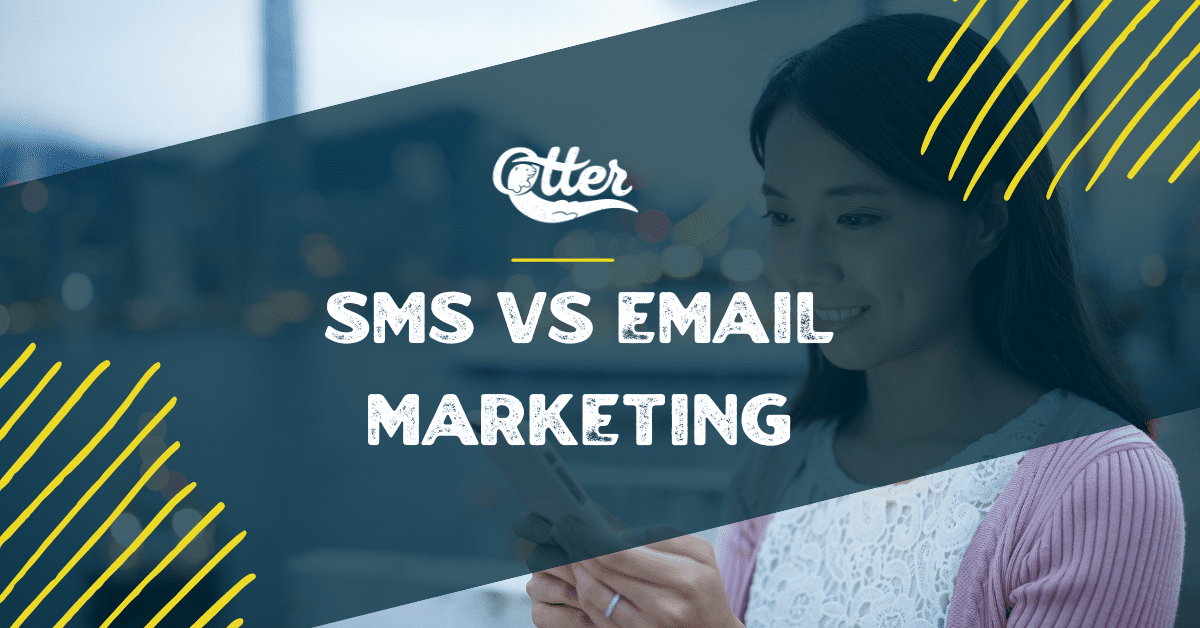For decades, email has been the preferred marketing and communication channel for businesses looking to reach their target audiences. But with the proliferation of handheld devices, SMS has emerged as a viable and popular alternative.
In today’s business competitive environment, you must leverage every advantage you have to reach and communicate with your target audience. But determining which of these two channels is best for you and your bottom line can be difficult.
In this article, we will explain the differences between SMS marketing and email marketing and provide you with all the information you need to make an educated decision.
What Is the Difference Between SMS vs. Email?
1. Cost
One of the most important factors to consider for any business is the cost of each marketing campaign. After all, your marketing budget should cover all of the costs associated with marketing your product or service.
When calculating the cost of a text marketing campaign, you must consider the length and number of texts, as well as the region to which you are sending them. Your service provider’s fees also impact the overall cost.
Email marketing is less expensive, but if you consider automation and customization, the costs will vary and may be higher than a text campaign.
2. Open Rate
SMS is the clear winner of any marketing campaign in terms of open rate, with a whopping 89% of phone owners reading a text message within the first 30 minutes of receiving it. In contrast, emails have an average open rate of 17.92%.
SMS messages have a high open rate because they are a more direct way to reach people. This is because recipients receive an SMS notification immediately, increasing the likelihood that the message will be seen.
3. Customization
Email campaigns are more customizable than SMS messages because they can be longer and include graphical elements, allowing you to brand your messages. An SMS, on the other hand, has a character limit of around 160. Email is also best when you want to send information such as attachments, images, videos, forms, and so on.
If you choose to create an SMS campaign, make sure your message is brief and to the point.
4. Click-through Rate
Longer doesn’t always mean better and this is evidenced in the click-through rate of SMS messages compared to emails.
SMS messages have a click-through rate of around 19.3% because of their short length making them easier to read. Only 2.3% of people click links in marketing emails, primarily because recipients stop reading halfway through before reaching the link.
Pros & Cons of Email Marketing
Pros
- Automation: You will save time, effort, and money by automating your email marketing. When combined with analytics, you can improve conversion and click rates.
- Customization: When it comes to customizing the experience for clients, the length and ability to add different elements to an email give it an advantage.
- Cross-platform: Emails can be viewed on any device, including a computer, smartphone, or tablet.
Cons
- Lower click-through and open rates: With inboxes being flooded with spam, newsletters, and offers, your target audience is less likely to notice your message.
- Design problems: Your email should be designed in such a way that it is readable and looks good on all devices and email providers.

Pros & Cons of SMS Marketing
Pros
- High open rate: SMS has an open rate of up to 90%. When you send a text message to a customer, you can almost always count on them opening it.
- No internet required: Because your audience does not need Internet access to receive SMS messages, your campaigns can reach a larger audience.
- High engagement: Because your recipients are more likely to click on a CTA in a text because it is short and precise, your engagement levels are much higher.
Cons
- Character limit: Because a single text message can only contain around 160 characters, you must be extra creative in order to deliver clear and impactful messages.
- Cost: The cost per message can differ depending on your location and carrier. This can affect your marketing budget and ROI.
Which Should You Choose: SMS vs. Email?
The question is not which is better but how you should use each and when to use them together. Both email and SMS marketing can have an enormous impact on marketing efforts but serve different purposes.
When to Use Email Marketing
- Promoting multiple products: You can highlight multiple products in a single email to increase sales because emails can be customized.
- Sending newsletters: Regular newsletters help build brand authenticity, whether you’re sharing information, explaining product development, or announcing special offers.
- Updating customers on company news: Keeping your customers informed about your business can help you increase brand loyalty.
When to Use SMS Marketing
- Promoting a single product: Promoting a single product can keep customers focused and more likely to buy it.
- Ask for reviews: Social proof is invaluable for future marketing efforts and the development of brand authority. A personalized SMS can assist you in obtaining more reviews.
- Engage customers: SMS is a powerful medium to engage customers in conversation to answer questions or resolve issues.
SMS Marketing With OtterText
OtterText is a platform intended for outdoor businesses and organizations of all sizes looking to improve efficiency and revenue through waiver management.
You can create personalized experiences tailored to your customer’s needs using Otter’s SMS Marketing features. It allows you to check in with your customers and asks for feedback, reviews, and testimonials to establish trust and authority in your niche.
You can also use powerful triggers and conditions to automate SMS campaigns for maximum customization.
To get started with SMS marketing, sign today!



